Vol. 2, Issue 1, January 29, 2021


Reaffirming our Commitment to Social Justice in Teaching
By Wei Ming Dariotis, Faculty Director, CEETL; Professor, Asian American Studies Department; Affiliate faculty Educational leadership Doctoral Program
Dear SF State Colleagues,
Welcome to the new year and new semester.
In our latest issue of CEETL Circles, we are focusing on the theme of “Renewal.”
Spring is the time of clearing things out to make room for new things to grow. For our hearts to be renewed with hope and joy. To inspire, which means, to take a breath in. To breathe in, first, we must breathe out.
This winter, we saw an insurgency inspired and supported by structural racism threaten our democratic processes. How we respond to those actions will tell us a great deal about our political commitment to change. The way we face challenges and opportunities for renewal tells us about what we value. Is it Justice? Is it Equity? Is it Diversity? Is it Inclusion? Is it Love?
And then we saw history being made when Bay Area’s Kamala Harris became the first female and first Black and first South Asian American Vice President of the U.S., sworn in by the first Latina Supreme Court Justice. How do we hold both joy and reasonable fear, hope and righteous anger without holding in our breath?
As the Spring Semester 2021 begins, let us let go of what we have been holding in so we can welcome new growth. With so much changing so quickly, taking the time to recognize and celebrate opportunities for renewal can help us be better prepared for the change to come.
This issue, we hope, will serve as an inspiration to you. You will hear faculty testimonies, get an overview of CEETL offerings, all with the focus on social justice and inclusion in teaching and learning, and you will get to see anti-racist work throughout the university.
Together, we renew.
In unity,
Wei Ming Dariotis

2021 Faculty Retreat Highlights

Thank you all for being a part in the 2021 Faculty Retreat.
Why did the Academic Senate and CEETL decide together that the Faculty Retreat this year needed to center on “How to Be an Anti-Racist University”? Because the events of the past year--and especially the past month--have led us to realize that no matter what job you do at SF State, you need to do it with an explicit commitment to finding ways to heal past wounds, to repay educational debts, and to speak truth to power. To paraphrase Ibram X. Kendi, in whose book title we found the title of the day's event: The opposite of being racist isn’t being “not racist,” it’s being explicitly and actively antiracist.
~ San Francisco State University President Lynn Mahoney
~ California State University (CSU) Chancellor Joseph I. Castro

Taste of the PIE: Faculty Highlights
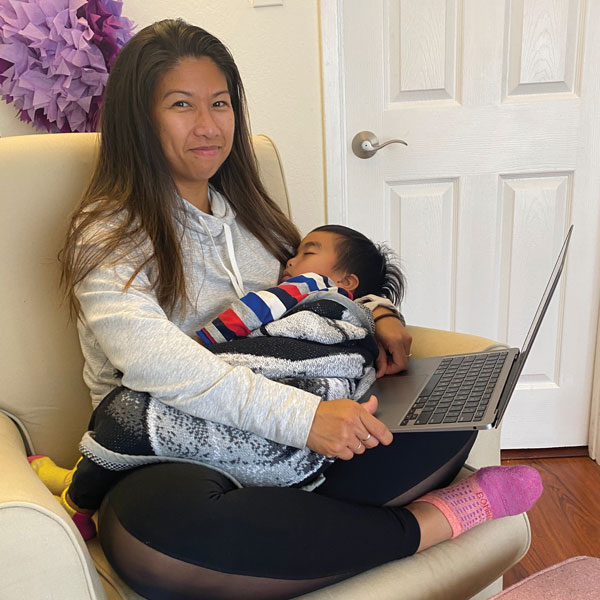
Valerie Francisco-Menchavez
Associate Professor
Sociology and Sexuality Studies
Teaching Racial Justice in the face of white supremacy
Watching white supremacists and extremists breach Capitol Hill on Wednesday, January 6, 2021, I wavered between disbelief and feeling like all of this was so predictable. After all, four years of a regime that leaned into racism, xenophobia, sexism, transphobia, violence and fascism, emboldened white extremists. Even the Department of Homeland Security under Donald Trump flagged the rise in far-right white extremism as the biggest threat to American safety.
But on Wednesday, January 6, 2021, there was also a swell of democracy. It was in Georgia. In the years, months and weeks before the insurrection, it was Black women and organizers, like Stacey Abrams, former gubernatorial candidate, LaTosha Brown, co-founder of Black Voter Matters, Atlanta Mayor Keisha Lance Bottoms and Errin Haines, editor-at-large of The 19th, and many more, who mobilized and built coalitions across racial and ethnic lines to flip the state.
Not once, twice. First, to secure the presidential win for Joe Biden in November 2020. And to deliver two new democratic seats in the Senate for Senator Raphael Warnock and Senator Jon Ossoff.
In the weeks leading up to the runoff election in Georgia, SF State alumni, nominee for the Sociology Hood Award in 2019, Samir Shrestha joined volunteers from Seed the Vote in the Bay Area and Asian American Fund in Georgia to knock on doors and talk to potential voters, specifically Asian Americans. Samir, a Nepali immigrant who has been involved in Bay Area organizing for years, flew across the country and contributed to mobilizing the Asian American vote in Georgia, since they are the largest growing racial and ethnic group in the state. With a record turnout among African American and Asian American voters in the runoff elections, as well as the organizers in coalitions, many people of color found solidarity among one another, and most importantly, political power in one another. I highlight Samir’s contribution, among the many who worked tirelessly to create change in Georgia, to lift up the potential and realization of interethnic and interracial solidarity.
My point here is, as educators, we must use the glaring contradictions to expose the systemic problems in our country, present on the day of the insurrection. Here are a few I can think of:
1. How Donald Trump deployed preferential narratives to his supporters on January 6, 2021 and all throughout his presidency;
2. The use of police and armed force, the problem with policing, more broadly; and
3. Language and ideology circulated in the media about which bodies are entitled to protest.
We can use these contradictions to spark our students’ critical thinking and, perhaps, action toward social and racial justice. We can pose the problems to our students regarding these contradictions:
1. Why are the violent rioters who support Trump called “protestors” instead of “terrorists”?
2. Why did the police presence in preparation for Black Lives Matters protests look so different from the footage of police taking selfies with rioters inside Capitol Hill?
3. Why is “looting” such a big part of the narrative when it comes to largely peaceful protests and not to this violent mob? What’s the problem with conflating the word “terrorist,” which has negatively affected so many Muslims, Arab Americans and Black people, with white supremacists?
This is not only an opportunity to point out what’s wrong with the U.S. right now.
It’s a time to teach about what people are doing right, with hopes that our students, like Samir, will throw their weight into creating a country we all deserve.
Some resources I have found helpful as I set up spaces and exercises for my Winter 2021 session are below. There are explicit ways that white educators of students of color can engage the ongoing political and racial strife in this country. There are think pieces below to help us draw throughlines between racial violence and injustice in the U.S. There are multimedia resources below: a podcast and videos. More importantly, there are suggestions for all of us to consider in setting up our classrooms as spaces for sustaining critical thinking, media literacy and leaning toward facts and history.
- Resources for Teachers on the Days After the Attack on the US Capitol from Beyond the Stoplight
- History Repeats Itself in DC, The Legacy of Racial Violence Continues by SJSU Professor Faustina DuCros
- From Fringe to the Capitol, an episode on NPR’s Codeswitch and setting up critical questions about the construction of race
- Responding to the Insurrection at the Capitol from Facing History and Ourselves
Three Ways to Teach the the Insurrection the US Capitol from PBS Newshour (videos included)

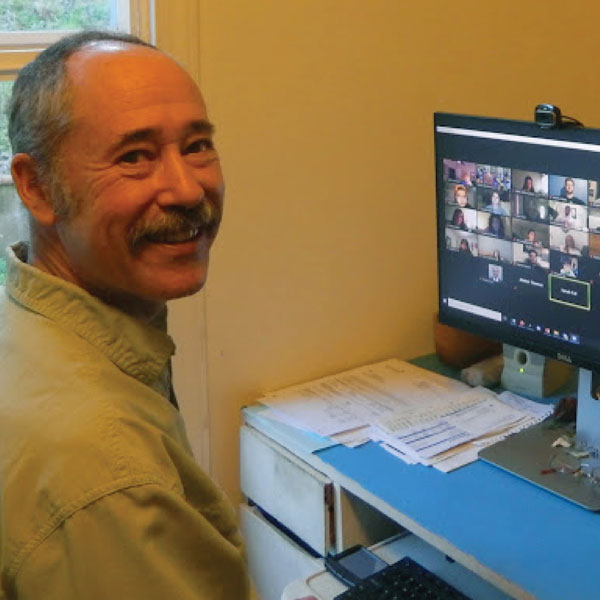
Carlos Davidson
Professor
PACE/Environmental Studies
Support Teams Help Build a Sense of Community in a Course
Students who feel a sense of community in school are more likely to succeed. This is especially true for first generation college students and students of color who may not feel like they belong at the University. Support teams are a way to create community in a course. At the start of the semester, students are assigned to a four person support team for the entire semester. The teams work together in group discussions and to help one another if they miss class or have questions on assignments. In the process, they build a sense of community, have more fun and are therefore more likely to succeed in class. I got the idea of support teams from a community college faculty friend and have been using them with great success for many years. The quotes in this article are from student feedback in my Fall 2020 online Environmental Leadership and Organizing course.
Support teams work especially well in combination with small group discussions in breakout rooms, by giving students a consistent group.
“Taking online classes gives me a constant feeling of being alone; I’m learning on my own, studying on my own, all while being home alone… By having a support group I felt like I wasn’t alone in this class, I felt like I was able to make connections.” - Student 1.
“My support team also really encouraged me to get assignments and readings done on time.” - Student 2.
“I really liked having multiple people that we met with regularly and knew we would meet with every week. I thought it really encouraged forming deeper bonds and feeling more comfortable with the other people in my class.” - Student 3
Support Teams Help Students Stay on Track with Coursework
In addition to building a sense of community, one of the main goals of support teams is for students to support each other — ask what is due tomorrow, help each other with assignments, maybe study together, check in with each other when they miss class, etc. Student 4 said, “My group was extremely helpful and made this semester a better experience for me. I think we discussed nearly every assignment over group chat.” Having students help each other with assignments centers them as a source of knowledge and opinion.
Support teams are easy to institute. Here are the basic steps:
1. Assign students to teams. I try not to have groups with just one woman or one person of color. Otherwise, the groups are random. Post the groups to iLearn.
Support team assignment instructions given to students:
All students will be assigned to be in a team for the duration of the course.
2. Explain in class the purpose of the support teams.
There are several purposes for support teams:
- To facilitate you helping each other out with the course
- To help you get to know your classmates to make the class more fun.
3. In the beginning of the semester, give students 10 minutes of class time to meet in their teams and encourage them to exchange phone numbers, emails and set up a group text.
Here’s what I will want you to do for your team:
- Exchange email, phone contacts and set up a group text
- Work together on group exercises for the first part of the course
- Check in with anyone who is absent from class
- Help each other out
4. For the first half of the course, I use the support teams for all in-class group activities — usually small group discussions in class — so the members of the support team get to know one another.
Support teams are never given group assignments, which can be stressful and undercut cooperation.
5. There is a reflection assignment for students to do individually at the end of the semester.
The teams will be announced in the second week of class.
Individual reflection on your support team. Due end of the semester.
Write up answers to the following questions:
- How was your group helpful to you this semester (please be specific and give concrete examples)?
- What did you like about having a support team?
- Anything you would change or did not work well with having support teams?
- The biggest challenge for me personally was...?
- I recommend or don’t recommend the use of the support teams next semester because...?
I’d be happy to answer any questions about support teams — carlosd@sfsu.edu

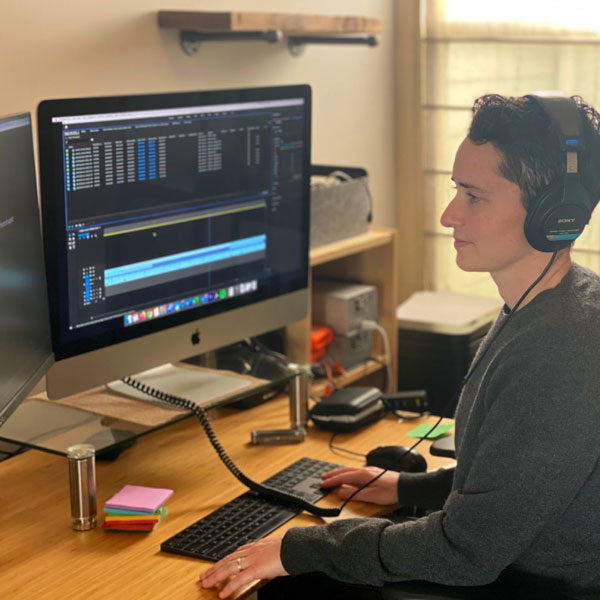
Laura Green
Assistant Professor
School of Cinema
Pedagogy Statement
Context: The SF State School of Cinema is a large film school (we have 1000+ majors) within the CSU, which makes us unusually affordable and accessible for a film school. We are a majority-minority school, where Hispanic / Latino students are the single largest racial/ethnic identity represented in our student body. We are an institution oriented toward social-justice, with many first generation students and students from less financially advantaged backgrounds. Our students are passionate about all different aspects of filmmaking — from making individual experimental artworks to crafting independent documentaries to crewing big-budget Hollywood features.
Content: I teach filmmaking with a dual focus on tools and craft, and centralizing (thanks for the great word, Dr. Tintiangco-Cubales!) the work of filmmakers from groups historically marginalized within cinema... Students often enter the cinema program familiar only with the most dominant voices in the industry, and I focus on teaching the work of filmmakers from a broad range of identities and backgrounds, working across multiple styles and genres.
Through this content, I strive to make students marginalized in different ways feel recognized and included in the world of cinema, as well as illuminating new pathways for students to think about what cinema is and what stories they can tell.
Power: I think it’s critical to recognize the power I have as a teacher, and use that power in a way that has a positive impact on students. In many instances, this means designing a class that validates students as equal contributors to classroom knowledge and experts in their own experience. One way I do this is to encourage students to bring elements of their own experiences and/or communities into their storytelling. One of the other key methods in my classes is group critique and feedback. When doing group feedback, there is an equalizing of the power dynamic, and we all become responsible to be teachers and learners on each others’ projects.
At the same time, I do have power within the classroom that comes from my position of authority, and I think there are a number of ways that I am able to, and responsible to, use that power to make a more equitable classroom. For example, I often try to “break the ice” by offering a critique about a problematic representation within works I or others have shown in class so that the burden isn’t always on students to open up difficult conversations.

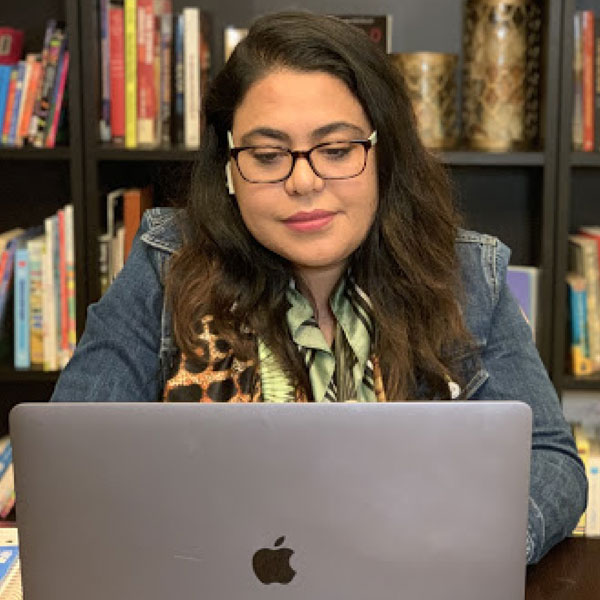
Fatima Chrifi Alaoui
Assistant Professor
Communication Studies
Pedagogy Statement
Purpose: I teach because it was my calling. I teach because I am a product of teachers who took the time to care for me and nurture my thirst for knowledge. I teach because I believe in passing on the tools for being critically and ethically-minded individuals who can shape their futures.
Context: I teach courses in technology and social justice, and this topic serves as a baseline for larger conversations about equity, inclusion, justice and diversity. For instance, in my classes, I take time to urge students to understand the role of social media in our everyday lives while simultaneously asking them to look beyond their social networks. Social media is how we can engage with global politics, social movements, civil unrest and see beyond ourselves. JEDI PIE has given me tools to contextualize these goals so that I can better provide tools to help students find their own voice.
Power: I thoroughly believe in reciprocal learning. I learn along with my students in every class. One of the great things about social media is the ability to bring people together, even when they are apart.
Empathy: I am learning that flexibility is key during this pandemic. I have always been an empathetic person, but truly highlighting empathy is more important now than ever.

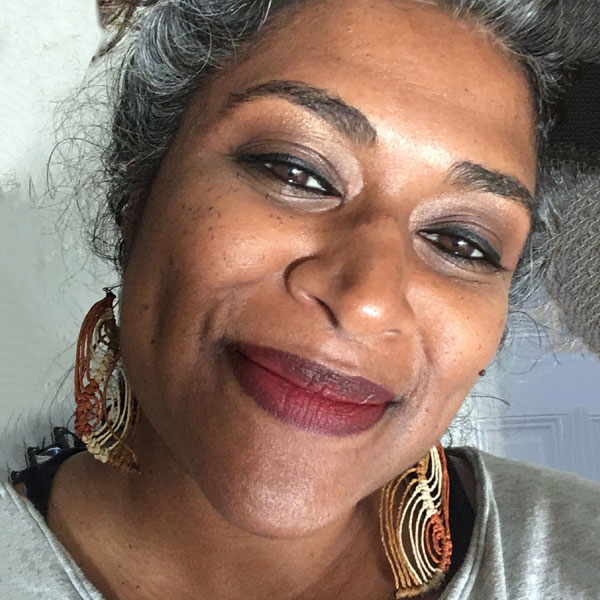
Rekia Jibrin
Lecturer Faculty
Criminal Justice Studies
Pedagogy Statement
The presence that I bring to teaching has much to do with global entanglements of colonialism in my own educational experiences and how these entanglements have both structured oppression and given me the poetic ground to resist it. The meeting of my own colonial history in northern Nigeria with that of colonial settlement, genocide and the transatlantic slave trade in the United States has but only congealed the commitments I have to maintaining a classroom space where students and I can dialectically produce different possibilities for being.
These ontological possibilities, born out of dynamic and everyday moments of teaching and student mentorship, enable students to articulate critiques while at the same time seeing themselves relationally in more human ways.
My course content reflects my training as a critical education scholar and my commitment to intellectual voices historically forced to exist at the margins of the mainstream educational sphere. Even when we experience our world at its most unlivable, people continue to live in the interstices of the dialectical interplay between intimacy, vulnerability, violence and resistance.


Robert Bierman
Lecturer Faculty
Computer Science
Pedagogy Statement
I know one of my greatest struggles is time. Both the students’ time and my time. There is so much more I want to teach them; there is so much more they need to know, but we are boxed. Three hours of class and six hours of homework a week over 15-16 weeks. Think about that, 9 hours * 15 weeks = 135 hours; that is less than 3.5 weeks of full-time work. A large number of jobs have a probationary period that is longer than that.
Purpose: I have loved to teach for as long as I can remember, though never took it as a profession. I actually started teaching a high school class in graphic arts while I was still in high school. I love the sharing of knowledge, of seeing someone have that ‘ah ha’ moment when they comprehend what they are learning. And I learn as well. It deepens my understanding, and I learn different ideas and perspectives by watching my students.
Context and Content: I am teaching people that want to go into computer science, but many are too young to know what they want for their career path (I asked them), so I have to teach them fundamental principles, core techniques, coding principles, as well as detailed technical application in implementation.
Method: Lecture, examples, projects. I emphasize the doing — hands-on experience. I also strongly encourage questions.

Partners in Teaching
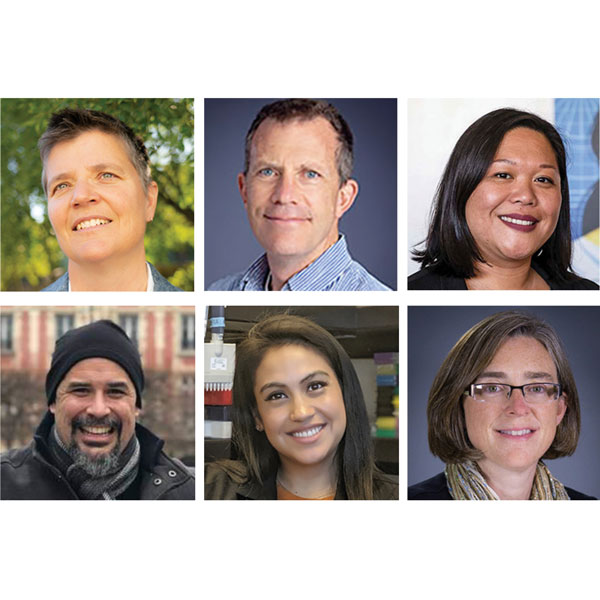
Department of Biology — BioSLAM
By Audrey Gavino Parangan-Smith, SF BUILD Co-Director
BioSLAM Leadership Team (Top left to right: Laura Burrus, Chris Moffatt and Audrey Gavino Parangan-Smith. Bottom left to right: Blake Riggs, Cathy Samayoa and Kimberly Tanner).
Over 60 biology instructors, staff (including some SF State alumni) and graduate teaching assistants participated in a summer-long project to redesign biology laboratory curriculum. This effort was a rapid response to the need for laboratory curriculum suitable for fall remote teaching across campus. In partnership with CEETL, HHMI (Howard Hughes Medical Institute) and SF BUILD (funded by the National Institutes of Health - Building Infrastructure Leading to Diversity award), the Biology Department not only transformed laboratory curriculum for online teaching, but used this opportunity to ground curricula in equity and inclusion to address the lack of representation of scientist of color and content focused on racial and social justice.
Biology used the momentum from this summer's anti-racism protests to address racism and exclusion that exists in STEM and STEM curriculum. The BioSLAM Team Coordinators consisted of biology faculty and leaders in STEM diversity, equity and inclusion efforts at SF State, Drs. Laura Burrus, Christopher Moffatt, Audrey Parangan-Smith, Blake Riggs, Cathy Samayoa and Kimberly Tanner. The team developed a guiding rubric for BioSLAM participants to redevelop their activities. This rubric prompts participants to evaluate their activities for their alignment with department core competencies and the incorporation of guiding principles for equity and inclusion, which were identified from the master's thesis work of SF State alum Analisa Brown.
The BioSLAM efforts are highlighted in a recently released commentary in Inside Higher Ed. The team anticipates that the curriculum developed over the summer will not only be used during the fall and spring remote instruction, but also when SF State moves back to in-person learning. The goal is that instructors will retain curriculum grounded in departmental core competencies and equity and inclusion.

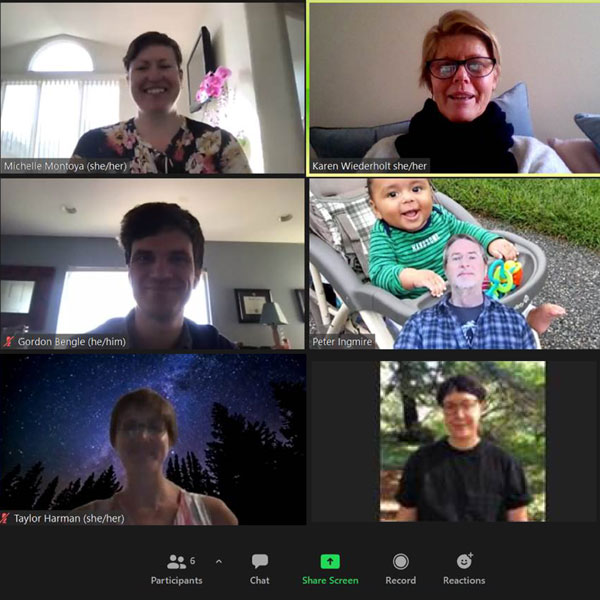
Tutoring Is Here for Your Students!
By Karen Margarete Wiederholt, Co-Director of Writing,
Tutoring and Academic Support (TASC)
Jump to the useful information/links for students below if you’re looking to add information about tutoring to your syllabus or iLearn course for the spring.
The Tutoring and Academic Support Center (TASC) opens with drop-in tutoring services on Monday, February 1, 2021. Drop-in hours are 10 a.m. - 4 p.m., Monday to Thursday, and 10 a.m. - 2 p.m. on Fridays. Students can access the TASC virtual reception room here and will be connected with an available drop-in tutor.
TASC opens for scheduled tutoring on Wednesday, February 10, 2021. Tutoring hours are 8 a.m. - 8 p.m. Monday to Thursday and 8 a.m. - 2 p.m. on Fridays. Students can get in touch with TASC at tutoring@sfsu.edu to request an appointment, or can schedule a 30-minute appointment on their own (undergrads only) on Navigator. For 50-minute appointments, all students can contact TASC, and we’d be happy to make an appointment for them.
Our new website, while still a work in progress, is available to view here. You can read about the different services we offer, and find links for students to request tutoring appointments and instructors to request class visits.
Right now, TASC faculty are busy getting all systems in place for a smooth start to the semester. We plan to hold an all-staff workshop for our 60+ tutors in the last week of January, and we’re always revamping our tutor education based on what we’re learning — especially from CEETL courses like JEDI and JEDI Writing PIE!
Useful information and links for students:
- TASC blurb with links to include in your syllabus or on your iLearn site.
- TASC website.
- TASC virtual reception area.
- Navigator login for undergrads making their own appointments.

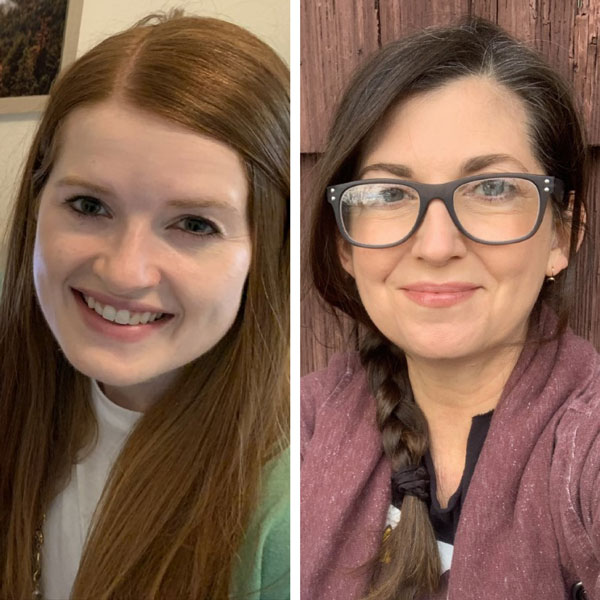
LibGuides For JEDI PIE
By Lizzy Borges, Education Librarian and Nicole Allensworth, BECA, Communication Studies, Journalism Librarian
J.Paul Leonard Library
To provide resources to the participants in CEETL’s Winter/Spring 2021 JEDI (Justice, Equity, Diversity and Inclusion) PIE Institute, the J. Paul Leonard Library (JPLL) librarians compiled a list of research guides with a JEDI focus. These research guides address issues related to anti-racism, equity, resistance, social justice and specific BIPOC groups. Also included are guides that were created to support faculty and students as they engage in remote learning, since extra thought and effort need to be taken to prevent remote learning from deepening educational inequity.
The purpose behind most research guides is for them to be “a starting place,” explains Joe Daniels, Research and Instructional Services (RIS) Librarian. “I utilize LibGuides in my work as points of reference… My guides are not intended to solve advanced research questions or to be an exhaustive list of material[s].” For example, when a student is researching the Black Lives Matter movement, a librarian can offer them a LibGuide that points toward resources and teaches research methods that will equip them to locate, analyze and evaluate information about the movement.
As we develop research guides, one way we attempt to promote diversity and inclusion is through the resources and scholars we share. RIS Librarian Hesper Wilson aims “to consider different viewpoints” and “to use search and resource examples that mention different population groups.” We try to consider representation while intentionally including scholars, resources, perspectives and ways of knowing that are not just culturally inclusive, but, hopefully, culturally responsive. This practice is in alignment with our values as librarians, as well as SF State’s social justice mission.
A group of JPLL librarians will also be participating in the Winter/Spring 2021 JEDI PIE Institute. As part of our work for the institute, among other projects, we will be examining our LibGuides through an anti-racist framework to critically examine and re-imagine LibGuides not just as neutral collections or tools, but as instruments of progress toward anti-racism and anti-oppression. In participating in this criticality, we hope to dismantle the harmful notion that libraries are neutral, and to develop research guides that will help SF State faculty and students teach and learn anti-racism.
We welcome feedback and suggestions on any of our research guides. Please feel free to include a link to any of these research guides in your iLearn courses. If you would like to discuss creating a research guide for a specific course, contact your library liaison.

